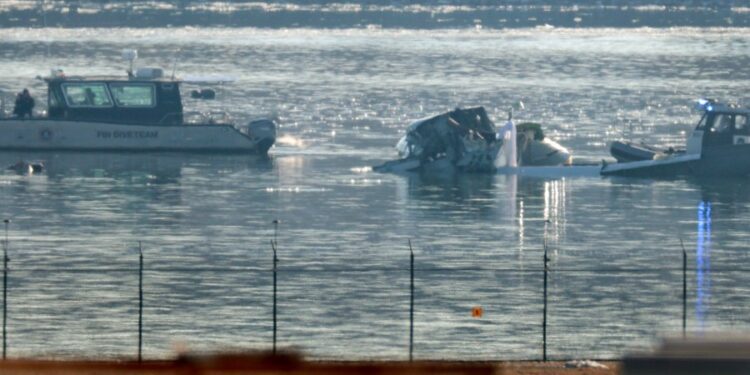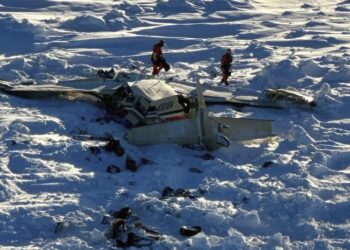
WASHINGTON (DC News Now) — Officials from the National Transportation Safety Board (NTSB) gave an update Saturday afternoon regarding the investigation into the deadly plane crash near Reagan National Airport (DCA) that happened earlier in the week.
On Wednesday, Jan. 29, A U.S. Army UH-60 Blackhawk helicopter and an American Airlines plane collided, causing both to crash into the Potomac River. Officials confirmed Thursday that there were no suspected survivors. All 64 people on the American Airlines flight and the three soldiers aboard the helicopter were killed.
NTSB member Todd Inman said on Friday that there is no set timeline regarding how long it will take to clear the debris but that crews would continue to do so through next week. Inman also said crews had found two recorders (also known as black boxes) from the plane, and that one of them (the cockpit recorder) had water intrusion.
Following the crash, responders from several agencies have been working to recover the bodies of those who were on board the aircraft.
In an update Saturday, Inman said crews have now pulled 42 bodies from the river, and the DC Office of the Chief Medical Examiner has positively identified 38 of them.
He also said that crews had recovered the helicopter’s black boxes, which also had water intrusion. Inman emphasized that this is “not uncommon” and that crews are working to extract the moisture from the devices to obtain data.
“We are very confident we will have that data,” Inman said.
Regarding what happened leading up to the crash, officials have outlined the following timeline using the plane’s data:
- Around 8:15 p.m., the aircraft left 37,000 feet for an initial descent.
- At 8:39 p.m., the crew was cleared for Mt. Vernon visual runway 1 approach.
- At 8:43 p.m., the crew made initial contact with the DCA tower. The tower controller asked if the crew could switch to runway 33.
- At 8:45 p.m., the plane’s autopilot was disconnected.
- At 8:46 p.m., a radio transmission was audible, informing the helicopter that just south of the Wilson Bridge was a plane at 1,200 feet, circling to runway 33.
- At 8:47 p.m., a radio transmission from the tower was audible, asking the helicopter if the plane was in sight. One second later, the crew received an automated traffic advisory stating “traffic traffic.”
Inman said that’s when a radio transmission from the tower was heard telling the helicopter to “pass behind” the plane. The crew then had “a verbal reaction,” according to the recordings.
Data showed that during this time, the plane started tilting upward (increasing its pitch). Sounds of impact were heard about one second later, followed by the end of the recording, according to Inman.
Data from the plane also indicated that it was at an altitude of around 325 feet when it collided with the helicopter. Still, the air traffic controller’s cab data showed an altitude of 200 feet, according to a report from NewsNation. Inman said more information is needed to determine the cause of the inconsistency.
Five people were working in the control tower when the crash happened, and interviews are underway, according to the NTSB.
The NTSB also determined that the pilots on the Black Hawk, who were on a training flight, had night vision goggles. However, investigators have not determined whether they wore them.
Further investigation is needed to determine if they wore them and if that could have played a factor in the crash, according to Inman.
In addition, the NTSB noted that officials still need to review data from the helicopter.
“We will find out what happened, and we will do everything we can to prevent it,” Inman said.







